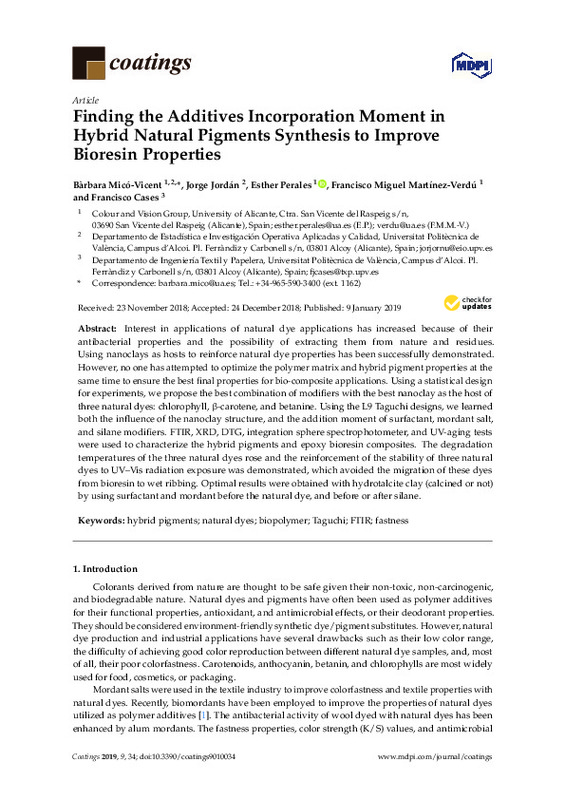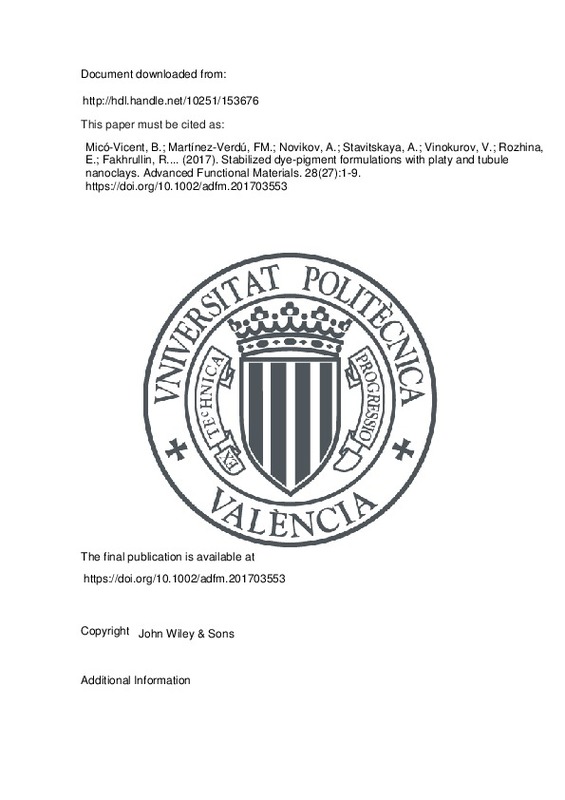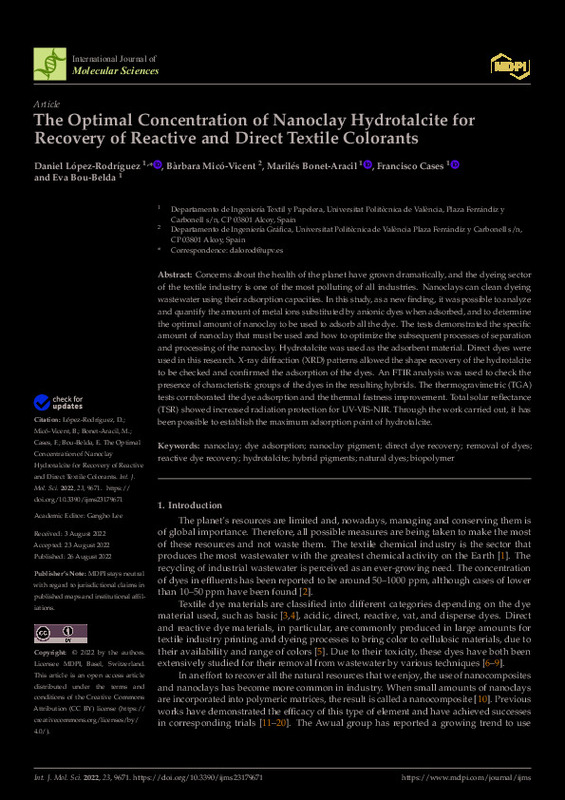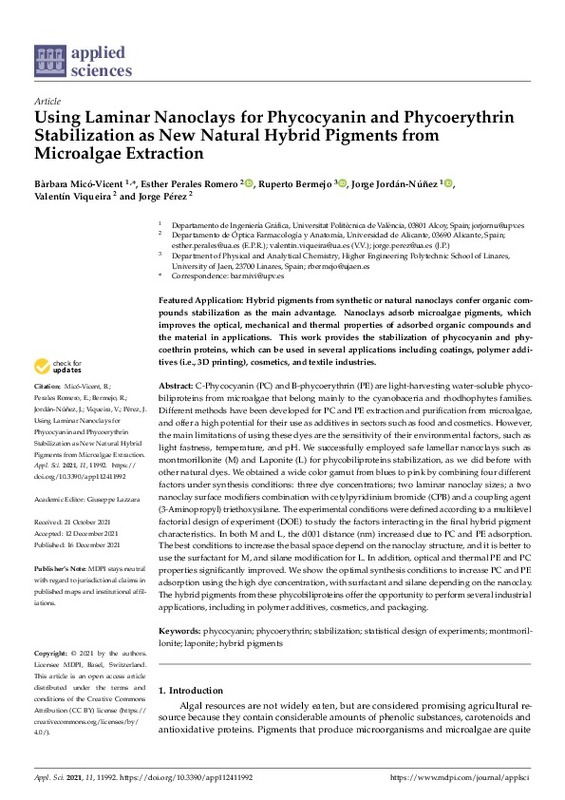

Listar por palabra clave "Hybrid pigments"
RiuNet: Repositorio Institucional de la Universidad Politécnica de Valencia
- RiuNet repositorio UPV
- :
- Listar por palabra clave
JavaScript is disabled for your browser. Some features of this site may not work without it.
Buscar en RiuNet
Listar
Mi cuenta
Ayuda RiuNet
Admin. UPV
Listar por palabra clave "Hybrid pigments"
Mostrando ítems 1-8 de 8
-
Micó-Vicent, Bárbara; Jordán Núñez, Jorge; Perales Romero, Esther; Martínez-Verdú, Francisco Miguel; Cases, Francisco (MDPI AG, 2019)[EN] Interest in applications of natural dye applications has increased because of their antibacterial properties and the possibility of extracting them from nature and residues. Using nanoclays as hosts to reinforce natural ...
-
López-Rodríguez, Daniel; Jordán-Núñez, Jorge; Micó-Vicent, B.; Belda, Antonio (Elsevier, 2024-12)[EN] This work deals with the synthesis of hybrids formed by the natural dye chlorophyll and halloysite for their subsequent application in the textile field. Once the pigments have been synthesised, with 98% adsorption, ...
-
López-Rodríguez, Daniel; Micó-Vicent, B.; Jordán-Núñez, Jorge; Moncho-Santonja, María; Bou-Belda, Eva (Elsevier, 2023-02)[EN] By using nanotechnologies it is possible to colour textile substrates with new printing techniques using dyes that have been discarded from non-exhausted dye baths. Hydrotalcite is clay with a high adsorbent capacity ...
-
Micó-Vicent, B.; Martínez-Verdú, Francisco M.; Novikov, Andrei; Stavitskaya, Anna; Vinokurov, Vladimir; Rozhina, Elvira; Fakhrullin, Rawil; Yendluri, Raghuvara; Lvov, Yuri (John Wiley & Sons, 2017-07-04)[EN] Alumosilicate materials of different morphologies, such as platy and tubule nanoclays, may serve as an efficient, protective encasing for colored organic substances and nanoparticles. The adsorption of dyes onto the ...
-
López-Rodríguez, Daniel; Jordán-Núñez, Jorge; Micó-Vicent, B.; Llinares Llopis, Raúl; Moncho-Santonja, María (Elsevier, 2023-11-03)[EN] There is growing concern about the health of our planet, which has led to a search for meth-ods to purify and recover the pollutant materials that are released into the environment.Among all industries, the dyeing ...
-
López-Rodríguez, Daniel; Micó-Vicent, B.; BONET-ARACIL, MARILÉS; Cases, Francisco; Bou-Belda, Eva (MDPI AG, 2022-09)[EN] Concerns about the health of the planet have grown dramatically, and the dyeing sector of the textile industry is one of the most polluting of all industries. Nanoclays can clean dyeing wastewater using their adsorption ...
-
López Rodríguez, Daniel; Micó Vicent, Bárbara; Bonet Aracil, María Angeles; Cases Iborra, Francisco Javier; Bou Belda, Eva (Universitat Politècnica de València, 2022-08-26)Concerns about the health of the planet have grown dramatically, and the dyeing sector of the textile industry is one of the most polluting of all industries. Nanoclays can clean dyeing wastewater using their adsorption ...
-
Micó-Vicent, B.; Perales Romero, Esther; Bermejo, Ruperto; Jordán-Núñez, Jorge; Viqueira, Valentín; Pérez, Jorge (MDPI AG, 2021-12)[EN] C-Phycocyanin (PC) and B-phycoerythrin (PE) are light-harvesting water-soluble phycobiliproteins from microalgae that belong mainly to the cyanobaceria and rhodhophytes families. Different methods have been developed ...
Mostrando ítems 1-8 de 8

Universitat Politècnica de València. Unidad de Documentación Científica de la Biblioteca (+34) 96 387 70 85 · RiuNet@bib.upv.es










